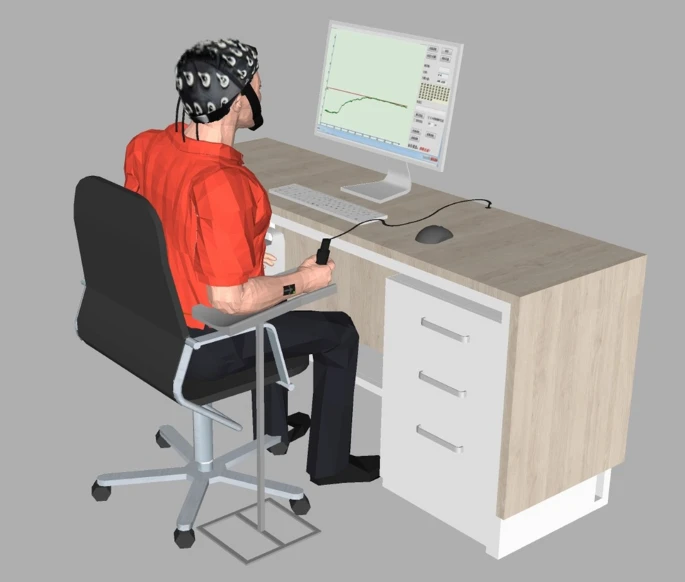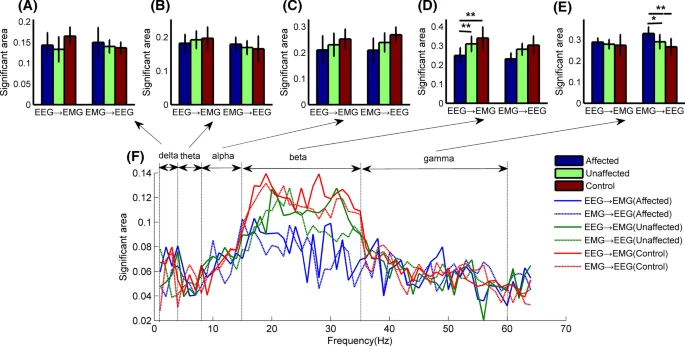


Ping Xie*, Xiaohui Pang, Shengcui Cheng, Yuanyuan Zhang, Yinan Yang, Xiaoli Li and Xiaoling Chen*
Functional corticomuscular coupling (FCMC) between the brain and muscles has been used for motor function assessment after stroke. Two types, iso-frequency coupling (IFC) and cross-frequency coupling (CFC), are existed in sensory-motor system for healthy people. However, in stroke, only a few studies focused on IFC between electroencephalogram (EEG) and electromyogram (EMG) signals, and no CFC studies have been found. Considering the intrinsic complexity and rhythmicity of the biological system, we first used the wavelet package transformation (WPT) to decompose the EEG and EMG signals into several subsignals with different frequency bands, and then applied transfer entropy (TE) to analyze the IFC and CFC relationship between each pair-wise subsignal. In this study, eight stroke patients and eight healthy people were enrolled. Results showed that both IFC and CFC still existed in stroke patients (EEG → EMG: 1:1, 3:2, 2:1; EMG → EEG: 1:1, 2:1, 2:3, 3:1). Compared with the stroke-unaffected side and healthy controls, the stroke-affected side yielded lower alpha, beta and gamma synchronization (IFC: beta; CFC: alpha, beta and gamma). Further analysis indicated that stroke patients yielded no significant difference of the FCMC between EEG → EMG and EMG → EEG directions. Our study indicated that alpha and beta bands were essential to concentrating and maintaining the motor capacities, and provided a new insight in understanding the propagation and function in the sensory-motor system.
大脑和肌肉之间的功能性皮质肌肉耦合(FCMC)已被用于中风后的运动功能评估。在健康人的感觉-运动系统中存在两种类型,即同频耦合(IFC)和跨频耦合(CFC)。然而,对于脑卒中,只有少数研究关注脑电图(EEG)和肌电图(EMG)信号之间的同频耦合,还没有发现跨频耦合的研究。考虑到生物系统固有的复杂性和节律性,我们首先使用小波包变换(WPT)将脑电图和肌电信号分解为不同频段的多个子信号,然后应用传递熵(TE)分析每对子信号之间的IFC和CFC关系。本研究共纳入了 8 名脑卒中患者和 8 名健康人。结果显示,脑卒中患者的 IFC 和 CFC 仍然存在(EEG → EMG:1:1, 3:2, 2:1;EMG → EEG:1:1, 2:1, 2:3, 3:1)。与未受中风影响的一侧和健康对照组相比,受中风影响的一侧的阿尔法、贝塔和伽马同步性较低(IFC:贝塔;CFC:阿尔法、贝塔和伽马)。进一步分析表明,脑卒中患者在脑电图→肌电图和肌电图→脑电图方向上的 FCMC 没有明显差异。我们的研究表明,α和β波段对集中和维持运动能力至关重要,为了解感觉运动系统的传播和功能提供了新的视角。